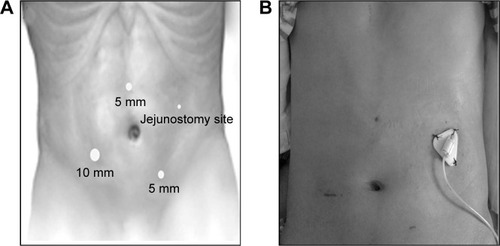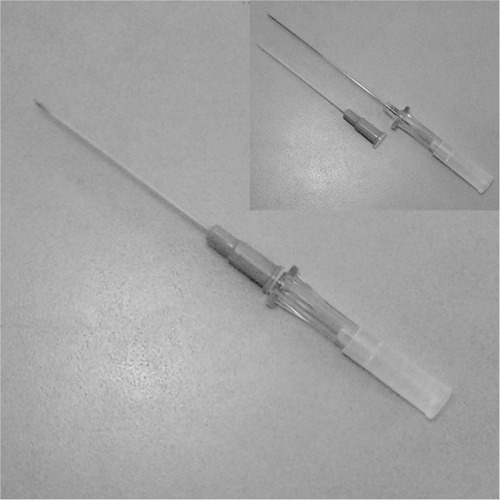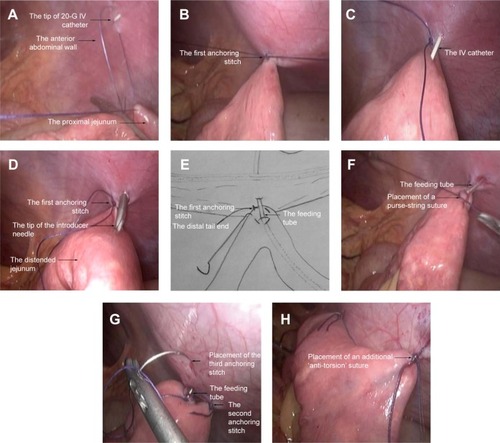Figures & data
Figure 1 (A) Port positioning. (B) A 30-day postoperative view of incision of a 38-year-old male patient.

Figure 2 A 20-G IV catheter assembly. The smaller inset figure represents the 20-G needle and catheter, separated.

Figure 3 Demonstration of the modified laparoscopic needle catheter jejunostomy.
Abbreviation: IV, intravenous.

Table 1 Patient characteristics and preoperative clinical data
Table 2 Surgical details
